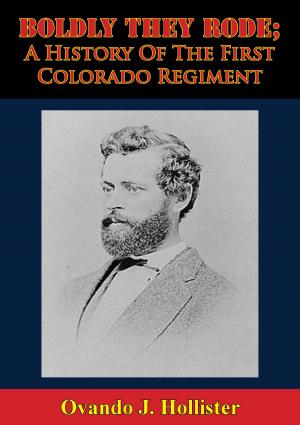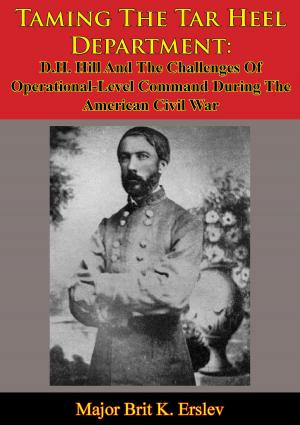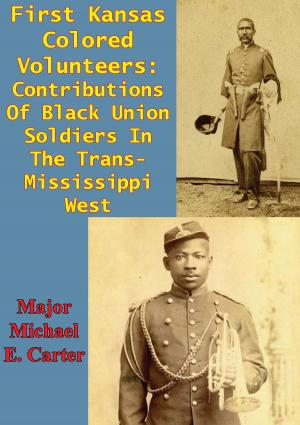Union And Confederate Infantry Doctrine In The Battle Of Chickamauga
Nonfiction, History, Modern, 19th Century, Americas, United States, Civil War Period (1850-1877), Military| Author: | Major Raymond Scott Eresman | ISBN: | 9781786255853 |
| Publisher: | Golden Springs Publishing | Publication: | November 6, 2015 |
| Imprint: | Golden Springs Publishing | Language: | English |
| Author: | Major Raymond Scott Eresman |
| ISBN: | 9781786255853 |
| Publisher: | Golden Springs Publishing |
| Publication: | November 6, 2015 |
| Imprint: | Golden Springs Publishing |
| Language: | English |
This study investigates whether the infantry doctrine used by the Union and Confederate armies in the Battle of Chickamauga followed published doctrine and determines what effect infantry doctrine had on the battle.
Beginning with a review of each side’s formal doctrine, the study divides the battle into sixty-eight engagements and focuses on organization, formations used, terrain, use of skirmishers, engagement distances, use of breastworks, and engagement results to determine the doctrine used and its impact on the battle.
The armies’ organizations and formations indicate that each used a different doctrinal source; Union forces appeared to use Brigadier General Silas Casey’s manual while the Confederates used Lieutenant General William Hardee’s and Lieutenant General Winfield Scott’s manuals. Casey’s doctrine gave the Union army greater potential flexibility within their brigade, division, and corps formations, but the cost of that potential was less combat power in the line of battle and vulnerability on the flanks.
Engagement analysis indicates that both sides deviated from tactics by fighting prone during heavy firefights. Union breastworks in this battle were almost invulnerable. The final conclusion is that while initial engagement distances were largely determined by terrain, minimum ranges seemed to be influenced by the increased lethal range of the rifled musket.
This study investigates whether the infantry doctrine used by the Union and Confederate armies in the Battle of Chickamauga followed published doctrine and determines what effect infantry doctrine had on the battle.
Beginning with a review of each side’s formal doctrine, the study divides the battle into sixty-eight engagements and focuses on organization, formations used, terrain, use of skirmishers, engagement distances, use of breastworks, and engagement results to determine the doctrine used and its impact on the battle.
The armies’ organizations and formations indicate that each used a different doctrinal source; Union forces appeared to use Brigadier General Silas Casey’s manual while the Confederates used Lieutenant General William Hardee’s and Lieutenant General Winfield Scott’s manuals. Casey’s doctrine gave the Union army greater potential flexibility within their brigade, division, and corps formations, but the cost of that potential was less combat power in the line of battle and vulnerability on the flanks.
Engagement analysis indicates that both sides deviated from tactics by fighting prone during heavy firefights. Union breastworks in this battle were almost invulnerable. The final conclusion is that while initial engagement distances were largely determined by terrain, minimum ranges seemed to be influenced by the increased lethal range of the rifled musket.


![Cover of the book The Vicksburg Campaign, November 1862-July 1863 [Illustrated Edition] by Major Raymond Scott Eresman](https://www.kuoky.com/images/2015/november/300x300/9781782899365-GJ69_300x.jpg)
![Cover of the book Fredericksburg, 1862 : A Study of War [Illustrated Edition] by Major Raymond Scott Eresman](https://www.kuoky.com/images/2012/may/300x300/9781908902610-4e8X_300x.jpg)

![Cover of the book The Civil War Diary Of Cyrus F. Boyd, Fifteenth Iowa Infantry, 1861-1863 [Illustrated Edition] by Major Raymond Scott Eresman](https://www.kuoky.com/images/2016/august/300x300/9781787200296-UdfO_300x.jpg)





![Cover of the book Four Years Under Marse Robert [Illustrated Edition] by Major Raymond Scott Eresman](https://www.kuoky.com/images/2015/november/300x300/9781786251169-Rry8_300x.jpg)



